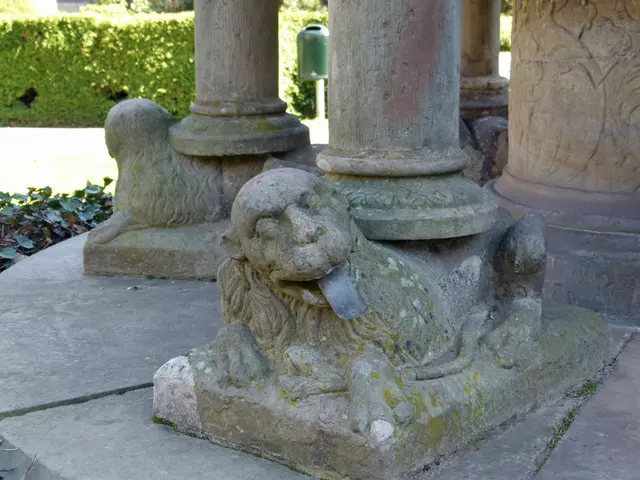Monumental medieval castle, surpassing Windsor Castle in size, situated atop the White Cliffs of Dover, standing as the biggest in the nation.
Dover Castle: A Historical Jewel Perched atop the renowned White Cliffs of Dover in Kent, Dover Castle stands as one of England's most formidable and significant fortresses. Often hailed as the 'Key to England,' it owes its strategic significance to its position overlooking the Strait of Dover, the shortest sea route to continental Europe.
The castle's roots extend back to the Iron Age, with evidences of an ancient hillfort predating the Roman invasion. The Romans themselves recognized the site's strategic importance, constructing a lighthouse in the 2nd century AD, one of the best-preserved Roman structures in Britain. In the Saxon era, a church, St. Mary in Castro, was built adjacent to the Roman remains, further enhancing the historical significance of the site.
King Henry II initiated extensive developments in the 1180s, investing considerably in transforming Dover Castle into a powerful stronghold. His reign saw the construction of the impressive Great Tower, which served dual purposes as a royal residence and a strong defensive element. Further developments of the inner and outer baileys with numerous towers, representing advanced military architecture for siege defense at the time, were mainly carried out by King John in the early 13th century.
Throughout the subsequent centuries, Dover Castle continued to evolve. King John added the outer curtain wall and more towers in the early 13th century. During the Napoleonic Wars, extensive underground barracks and tunnels were constructed to house troops and provide secure artillery positions. These tunnels played a vital role in the Second World War, serving as the headquarters for naval operations during the Dunkirk evacuation (Operation Dynamo). Even later, some tunnels were adapted for potential use during the Cold War.
To this day, Dover Castle's strategic importance remains undiminished. Its commanding position allowed it to control maritime traffic and served as a crucial defensive point against invasions. It has witnessed numerous historical events, from medieval sieges to its vital role in the World Wars, cementing its reputation as a guardian of the realm.
Today, Dover Castle remains a Scheduled Monument and a Grade I listed building, recognized for its national and international significance. Visitors can explore its well-preserved structures, from the Roman lighthouse to the medieval keep and the fascinating wartime tunnels, offering a comprehensive journey through England’s rich and often turbulent history.
For visitors exploring England, Dover Castle stands as an essential stop. Its blend of Roman, Saxon, Norman, and modern military structures makes it unique among English castles. Besides its historical and architectural appeal, the castle offers panoramic views of the English Channel and France on clear days, providing a picturesque backdrop to England's layered history.
For those planning a trip to England, here are some suggestions:
- 5 Breathtaking Hiking Trails in England to Get Lost in Nature
- The Small Fishing Village DUBBED 'The Loveliest Village in England': A Must-Visit All Year Round
- Uncover 5 Original and Vibrant Seaside Towns in the United Kingdom You Need to Visit
- For a unique combination of home and garden, travel to Dover Castle, a Scheduled Monument in England, boasting an ancient hillfort, Roman lighthouse, medieval keep, and fascinating wartime tunnels, offering spectacular views of the English Channel and France.
- After exploring the rich history of Dover Castle, immerse yourself in the local lifestyle by taking a scenic hike on one of the breathtaking trails in England, or visit a charming fishing village or a vibrant seaside town, to further immerse in the beauty and culture of this historic land.




